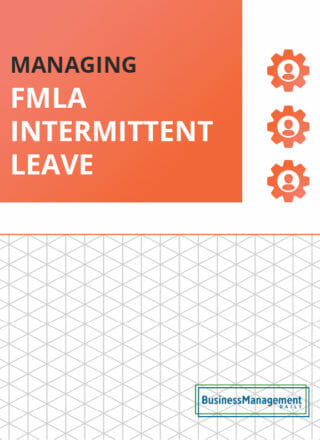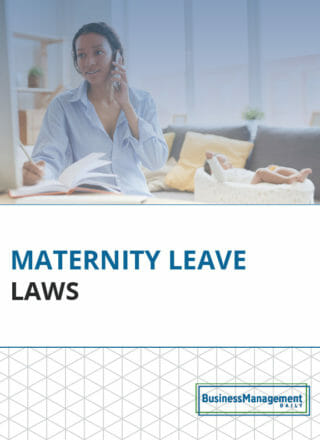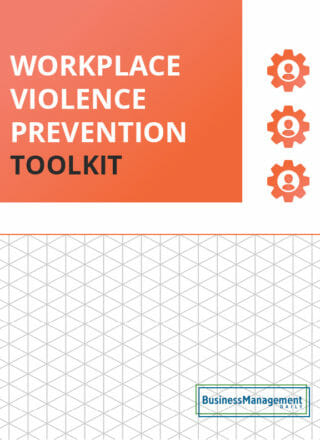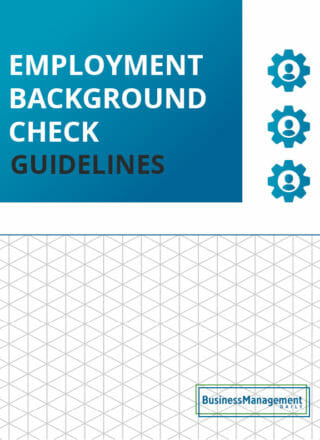
When prospecting new employment opportunities, modern job seekers are looking for a lot more than just money. Things like a fun workplace culture, healthy work-life balance, and the ability to work remotely now top the list for today’s job applicants. Employment equity is also huge for modern job seekers, as they want the companies they work for to emphasize diversity, equity, and inclusion (DEI).
The latest CNBC SurveyMonkey Workforce Survey polled over 8,000 employees in the U.S., and 80% of respondents want to work for a company that values diversity, equity, and inclusivity issues. That means if you want to attract top talent in today’s age, you need to develop and implement an employment equity plan.
Equitable initiatives include diversity training programs, wage transparency, and strategic recruiting that gives all races, genders, and ages equal opportunities. In the United States, the Equal Employment Opportunity Commission (EEOC) is the government entity in charge of enforcing federal laws that make various forms of employment discrimination illegal.
Employment equity is about ensuring visible minorities, aboriginal peoples, members of the LGBTQ+ community, and other marginalized groups receive equal opportunities for employment and protection from discrimination.
There are plenty of benefits involved with becoming an equitable workplace, including better employee retention, a rich company culture, and better financial performance. According to a report from McKinsey & Company, businesses that have diverse leadership are more likely to financially outperform companies that do not.
Stick around to learn more about employment equity, including how to create an employment equity policy at your organization.
In the past, employees were not given equal opportunities based on factors like gender, age, race, disability, and sexual orientation. As time has gone on, various awareness groups and government agencies have fought for equal employment rights and to put an end to discrimination, which is the core idea behind employment equity.
Significant strides toward equity and workplace equality were made by the Civil Rights Act of 1964, the Equal Pay Act of 1963, and The Americans with Disabilities Act of 1990.
Formally defined, employment equity is the idea that every employee is equal, regardless of race, gender, age, disability, or sexual orientation – and that they should all receive equal work opportunities based on their individual needs.
Employment equity is also about recognizing that not all workers are afforded the same opportunities due to discrimination, both past and present.
Therefore, equitable employment practices are about evening the playing field to ensure that everyone has a fair and equal chance at gainful employment. Pay equity is a huge part of this equation, as it’s crucial for all employees to receive the same pay for the same work.
The EEOC enforces the aforementioned federal discrimination laws, in addition to plenty of others. Employees from both the public and private sectors have the right to file a complaint to the EEOC if they feel an employer has unfairly discriminated against them.
Affirmative action was an attempt to provide employment and education opportunities to marginalized groups and visible minorities that were historically overlooked and discriminated against. However, race-based affirmative action has been banned by the Supreme Court as of June 2023 in most cases.
Employers are now finding ways to ensure diverse recruiting without engaging in race-based decision-making.
Everyone benefits when all employees receive fair and equal opportunities, which is what employment equity is all about. As stated before, women and visible minorities did not receive equal employment opportunities in the past, and the world is still working to correct these inequalities.
According to the Center for American Progress, “Women and people of color at all education levels overwhelmingly make up most of the workforce in lower-paying jobs.” The reason for this is complex, as there are many systemic inequalities and biases that continue to place marginalized employees at a disadvantage.
That’s why simply upskilling underrepresented workers isn’t a suitable solution, as the underlying issues will still persist. It’s a band-aid fix that won’t lead to consistent, measurable change in employment opportunities.
Employment equity, on the other hand, truly addresses these underlying issues, as it encourages full transparency and accountability on behalf of employers. That means being open about employee pay (ensuring pay equity and eliminating a pay gap), hiring practices, and other HR policies at your organization.
Besides fighting for equal human rights, employment equity provides numerous benefits for organizations.
According to the previously mentioned report from McKinsey & Company, companies that were in the top quartile for diverse leadership were 36% more profitable than those in the bottom quartile.
It’s more proof that an inclusive and equitable workforce promotes productivity and profitability.
Employment equity policies are about ensuring equal opportunities for marginalized groups, but who are they, exactly?
Based on historical data, they’re the demographics that are most likely to experience workplace discrimination.
As such, your equity policies should aim to protect the following groups:
These are the groups that are in most need of fair treatment, so your employment equity policy should provide them with the opportunities they deserve.
For instance, your equity policy should prohibit passing an employee over for a promotion based on their gender, ethnicity, sexual orientation, or disability.
Another perk of becoming more equitable is that it widens your talent pool.
By opening up equal employment opportunities to everyone, you’ll have more top talent to choose from, strengthening your workforce as a result.
Now, let’s look at the equity policies the U.S. and Canadian federal governments have in place. Both governments greatly emphasize fairness in hiring policies, which is why they both have federal agencies in place to pass and enforce employment equity laws.
In 1986, the Canadian government passed the Employment Equity Act with the hopes of providing fair employment practices for Canadians. However, the Act wasn’t without its critics, as some claimed it should have also protected federal employees. Canada released a revised version of the Employment Equity Act in 1996 that applied to a wider range of organizations.
The Act defines four demographic groups that it protects from discrimination, which are:
Any business that employs over 100 people in Canada must adhere to the Act’s policies, which include all businesses in the public sector. Federal employers must provide annual reports on their diversity levels and specify steps they’re taking to include the four protected groups from the Employment Equity Act.
The requirements for federal agencies are outlined by The Legislated Employment Equity Program (LEEP). Since implementing these policies, Canada has seen vast improvements in the diversity of its workforce.
As you can see in the graphs from this report, salary distribution in Canada is virtually identical across all demographics. Also, 3 of the 4 protected groups are currently above workforce availability, with only disabled employees falling a bit behind.
The United States has passed numerous laws regarding equal employment opportunities (EEO), including the Civil Rights Act of 1964, which also created the EEOC. The United States Civil Rights Center and the Office of Federal Contract Compliance Programs monitor EEO laws in the U.S.
The EEOC handles enforcing these laws.
Here’s an overview of the laws the EEOC enforces:
All federal and private employers in the United States must adhere to these laws. Otherwise, they will receive fines and other penalties from the EEOC. Employees also have the option to file official complaints to the EEOC if they feel they’ve been discriminated against, which includes sexual harassment.
If you want a diverse workforce that features equal employment opportunities, you’ll need to create an employment equity policy — but what does that look like?
What are the most important things you should include in your policy?
To find out, let’s take a look at some examples of employment equity in action.
When building an inclusive workforce, it can be difficult to know where to start. The best way to kick things off is with some diversity training for your existing employees, which will establish a tolerant foundation at your organization that you can build upon.
What is diversity training?
It’s getting your employees to take part in workshops and training modules that improve cultural awareness, tolerance, and understanding. Diversity training also provides ways for employees to fight back against discrimination, and it can educate them on unconscious biases that they may not even know about.
For example, lots of minorities have to put up with frustrating microaggressions that are offensive and make them feel unwelcome. At the same time, most employees aren’t even aware that they’re acting in an offensive way, which is why education and training are your best tools for prevention.
Some employees may tell employees of other ethnicities that they ‘don’t see color’ in an attempt to seem tolerant, not knowing that they just committed a racially charged microaggression.
Saying that they ‘don’t see race or color’ in another employee denies their racial and ethnic experiences, which is offensive. It also suggests they should assimilate into the dominant culture, letting go of their heritage as a result.
These remarks build tension in the workplace, and they cause undue stress and negative feelings for people of color. For further reading, here’s a list of the most common racially-charged microaggressions to avoid at your organization.
Getting your employees to attend diversity workshops regularly will open their eyes to microaggressions and other forms of discrimination, which will help them get rid of any bad habits.
The gender and racial pay gap is another huge concern for employment equity, as it’s imperative that everyone get paid the same rates for the same work. If you’re tight-lipped about your wages, then your employees will always assume that some unfairness is taking place.
The best way to encourage pay equity is to be completely transparent with the wages you pay your employees, regardless of their race, gender, sexual orientation, or disability. If your employees are able to prove that they’re paid the same rates, they’ll know that they work for an inclusive, equitable organization — which is what you want.
One of the most important ways to implement employment equity is to rethink your recruiting process. For one, you should aim to have a diverse recruitment board.
It’s because if all your hiring managers are the same race, gender, or sexual orientation — unconscious human bias will inevitably creep its way in – whether your recruiters realize it or not. Therefore, using a recruitment board consisting of various races, genders, sexual orientations, and disabilities is the best way to avoid bias.
After that, you need to establish a strong set of objective hiring criteria for each position that focuses on hard and soft skills.
Another tactic to get rid of bias is to use the power of A.I. Most applicant tracking systems (ATS) will automatically sort resumes based on the candidates who are most qualified based on your preset qualifications.
There are also AI-powered video interview tools that analyze candidate’s speech patterns, facial expressions, and other nonverbal cues to determine if they’re a suitable fit for the position. Removing the human element by using A.I. makes skills-first hiring a possibility, which considers a candidate’s skill set and experience and nothing else.
Lastly, employment equity is also about providing equal opportunities for employees with disabilities and health conditions. The best way to do this is to provide reasonable accommodations to employees with such conditions.
For example, employees with ADHD may need quiet spaces to work or noise-canceling headphones to focus properly during the workday. Granting these accommodations helps level the playing field so that disabled employees can complete their work with the same productivity and accuracy as others.
Employees with anxiety disorders may prefer hybrid working schedules, and you can also offer things like mentoring and counseling to help them cope.
Everyone benefits from an equitable workplace with equal opportunities, which is why so many organizations are focusing on diversity, equity, and inclusion. Equitable companies are more profitable and feature happier company cultures, and they provide equal opportunities for marginalized groups that have been overlooked and discriminated against in the past.
By implementing employment equity policies at your organization, you’ll gain a reputation as a fair and equal employer, attracting more talent to your front door.


HOW INTERMITTENT FMLA WORKS & HOW TO MANAGE IT: Guidelines on managing intermittent leave and curbing leave abuse under FMLA regulations


